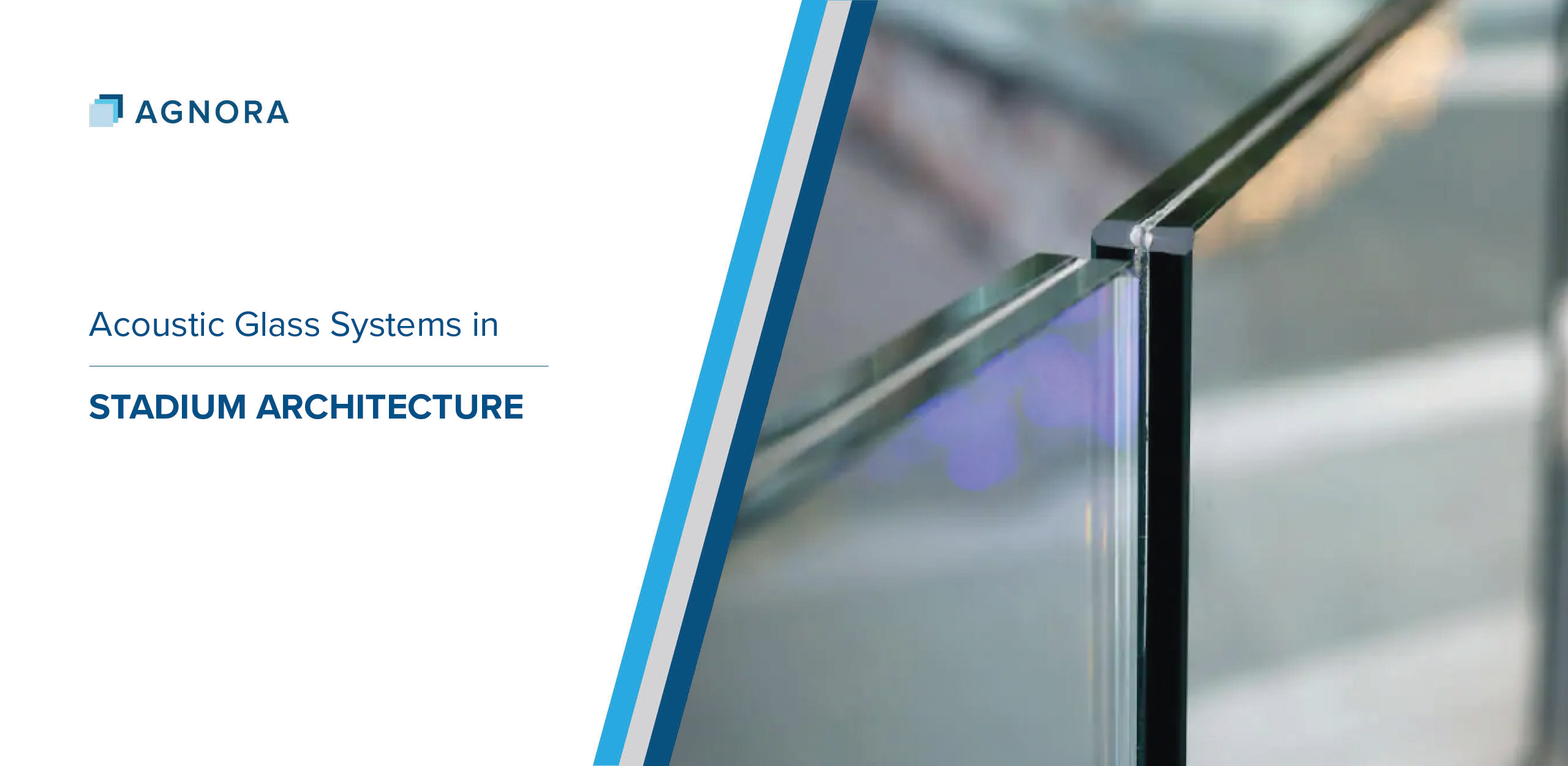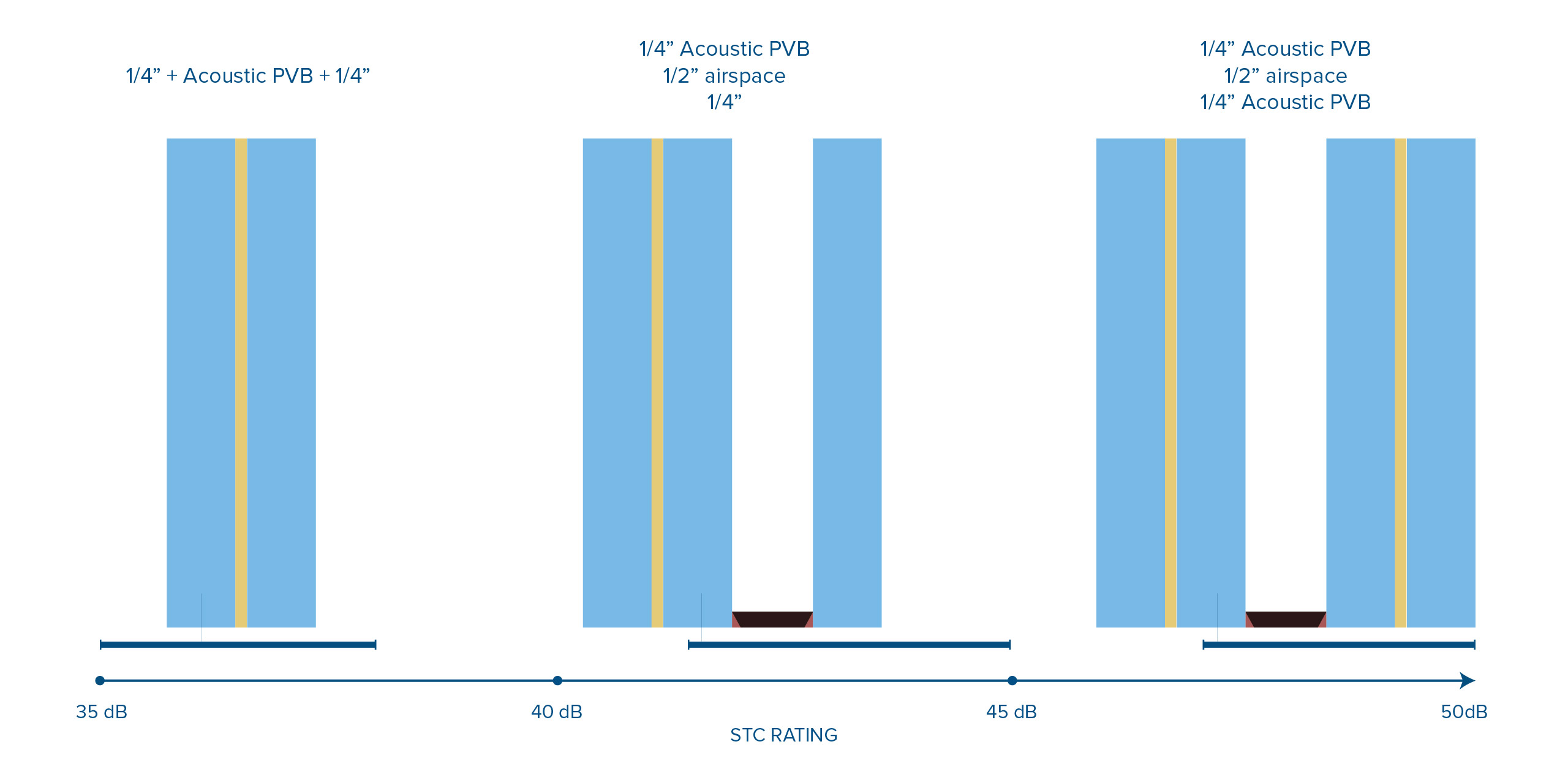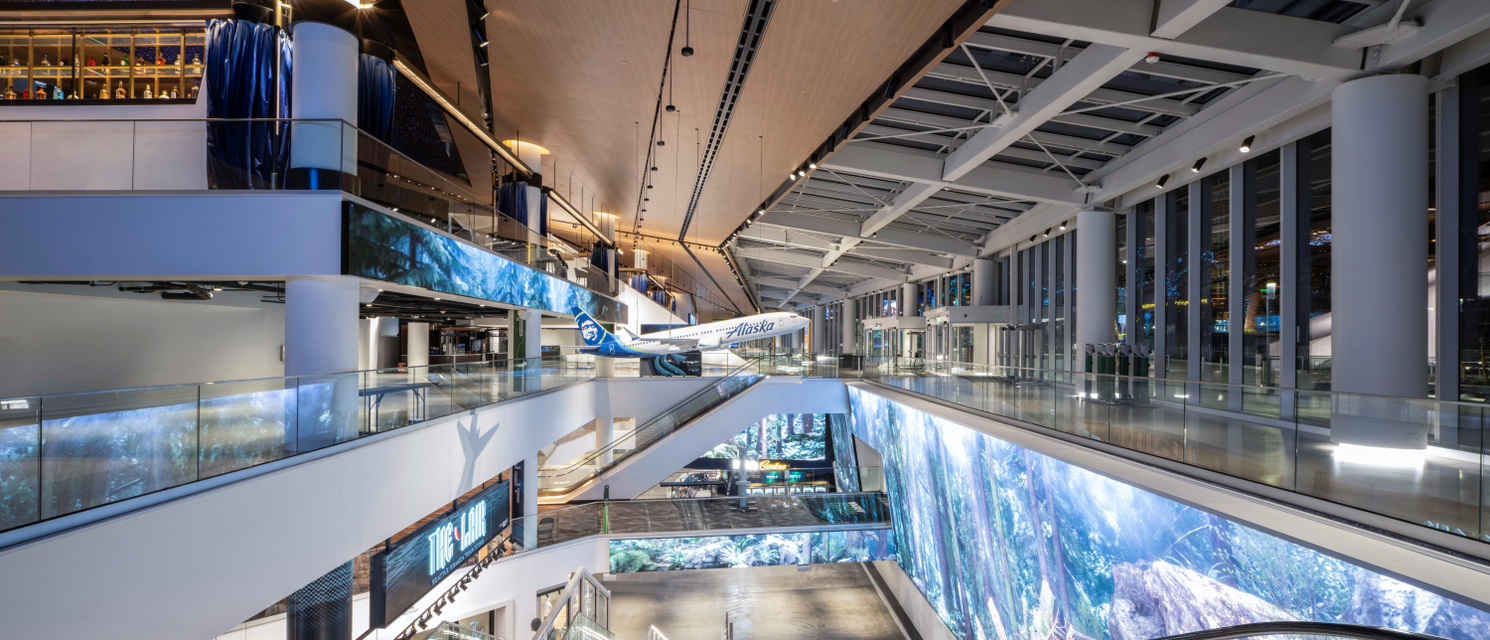
May 21, 2025
Emboldening the Premium Seating Experience
Modern stadiums are architectural feats—massive, multifunctional spaces that must balance aesthetics with safety, performance, and comfort. Nowhere is this balance more critical than in premium seating areas, where fans and VIP guests expect an elevated experience. Acoustic laminated glass plays a pivotal role in delivering this experience, ensuring peace from the roar of the crowd while upholding stringent safety standards, especially in hurricane-prone regions.
The Role of Acoustic Laminated Glass in Premium Stadium Zones
Sound Attenuation
These exclusive areas demand a level of quiet that standard glazing can’t offer. Acoustic laminated glass, typically made using specialized interlayers like PVB (polyvinyl butyral) or SGP (SentryGlas®) with acoustic properties, significantly reduces sound transmission. This allows guests to converse comfortably while still feeling immersed in the live experience.
Safety and Security
Laminated glass doesn’t just mitigate sound—it holds together when shattered, maintaining a barrier and preventing dangerous shards. This makes it ideal in high-traffic public spaces and essential in areas governed by hurricane impact codes.
Understanding U.S. Acoustic Standards
While acoustic building codes in the U.S. are less standardized than structural or energy codes, there are established guidelines and references used by architects and acousticians to define acceptable levels of indoor sound quality.
Commonly Referenced Standards:
-
ANSI S12.60 – Sets acoustic performance criteria for classrooms, but often referenced for other public spaces requiring speech clarity.
-
ASTM E413 – Used to define STC (Sound Transmission Class) ratings, which quantify how well building elements attenuate airborne sound.
-
ASTM E1332 – Defines OITC (Outdoor-Indoor Transmission Class), often used in urban or stadium settings to assess façade performance against exterior noise.
-
LEED v4.1 – Acoustic Performance Credits – Encourages use of sound-dampening materials, including laminated glass, in high-performance buildings.
Though not mandated nationwide, many high-end stadium projects voluntarily meet or exceed these standards to enhance user satisfaction and brand prestige.
Acoustic Glass Configurations for Stadium Use
To meet acoustic expectations in premium stadium environments, glass configurations must be carefully engineered. The correct combination of glass thickness, interlayer type, and airspace yields optimal results.
Typical High-Performance Acoustic Configurations:
Monolithic Laminated Glass with Acoustic PVB
-
-
-
Example:
-
1/4″ glass + 0.090″ acoustic PVB + 1/4″ glass
-
-
STC rating: ~38–40
-
Best for interior partitions between suites or lounges.
-
-
Insulating Glass Units (IGUs) with Laminated Inboard or Outboard
-
-
-
Example:
-
1/4″ laminated outboard (with acoustic PVB) + 1/2″ airspace + 1/4″ monolithic inboard
-
-
STC rating: ~42–45
-
Ideal for exterior walls facing the stadium bowl.
-
-
Triple Glazed or Multi-Laminated IGUs
-
-
For ultra-premium areas requiring near-complete sound isolation
-
Example:
-
1/4″ laminated (with acoustic PVB) + 5/8″ airspace + 1/4″ laminated (with acoustic PVB)
-
-
STC rating: ~48+
-
Used in broadcast boxes or owners’ suites.
-
Pro tip: Asymmetrical constructions (where lite thicknesses differ) often improve acoustic performance by disrupting resonant frequencies.
Questions to Ask as a Stadium Designer
Acoustic performance needs to be considered early in the design process—not just during the glazing specification phase. Key questions include:
-
What are the target STC and OITC ratings for premium seating areas?
Define this with the client and acoustical consultant early. -
How will interior and exterior noise sources be controlled holistically?
This includes walls, ceilings, HVAC, and glass systems. -
What is the expected use of each premium space?
A press box requires different isolation than a VIP lounge. -
Can I integrate acoustic performance with solar control and safety needs?
Consider multifunctional glass that meets all requirements simultaneously. -
Do I need testing or mock-ups for acoustic validation?
High-profile venues often require real-world verification of performance.
Tying It All Together
In the world of premium stadium design, every detail matters—and acoustic performance is no exception. Acoustic laminated glass is more than just a noise barrier; it’s a critical component of the elevated fan experience. It ensures that sound enhances rather than detracts from the environment, preserving the energy of the event while protecting the comfort and privacy of VIP guests. By integrating thoughtful glass configurations and asking the right questions early, stadium designers and glazing partners can deliver a world-class experience that looks and sounds exceptional.



